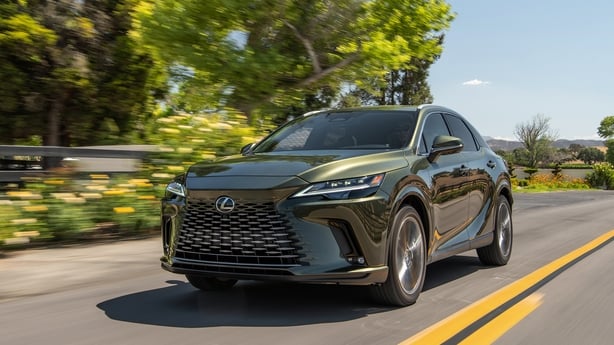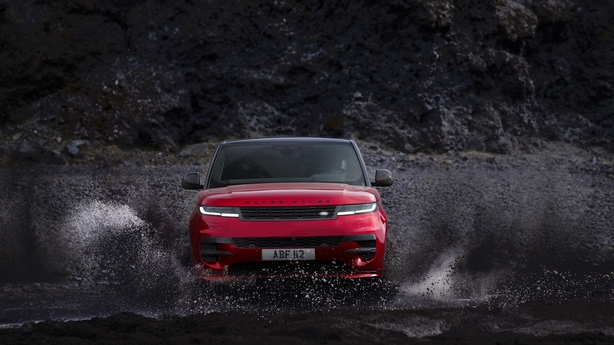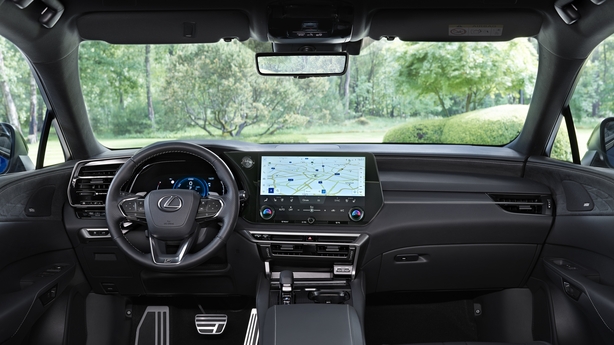Sales of fully-electric vehicles have risen by 46% in the first four months of this year, up to 9,828 compared to 6,748 in the same period last year. But large plug-in petrol SUV's are still selling, albeit in small numbers.
One of the standout statistics relates to Polestar, a full-electric subsidiary of Volvo, which saw its sales increase by almost 1000% from a mere 19 to 208.

These figures suggest at least two things: that problematic though our public charging system may be right now, more and more people are embracing electric and a younger cohort of drivers is willing to spend in or around €60,000 on a high-end electric car.
The future is already happening.
With a new focus on higher taxation of large SUV's - the Green Party has already indicated its willingness to push for such a move in the budget later this year - some car companies are going to find it very hard indeed to argue in the court of public opinion about the cars they’re selling.
While most volume manufacturers - Volkswagen and the Stellantis Group (Peugeot, Fiat and so on) - are racing to get their EV’s onto forecourts, others like Range Rover won’t have a fully-electric model for about another two years. While companies like Skoda don’t expect to sell petrol or diesel cars after 2030, it looks like it will take Lexus until 2035 to be fully-electric.
Both Range Rover and Lexus sell cars in smaller numbers for higher returns than volume manufacturers and both design and engineer their cars for an affluent global customer base.
But in the UAE, for example, where luxury cars have sold in huge numbers, electrification is now a major focus. EV’s may only account for 1% of the overall market there but the Emirates are predicting this is only the beginning.
The luxury customer base is also beginning to shift dramatically, at least according to a new report from Mc Kinsey Consulting. It suggests that more than 70% of owners of premium and luxury cars with conventional diesel or petrol engines are now willing to shift to an EV.
That figure suggests serious pressure on luxury manufacturers to accelerate on EV’s but it still looks like they, with the possible exception of Mercedes, face perhaps the biggest challenge for the car industry. Building an EV-specific platform is no easy task and it’s a very expensive undertaking.
In the meantime, plug-in electric cars are an alternative to full battery EV’s for those who may be reluctant to go fully electric, due to price or ongoing anxiety about range. This is also true of the luxury market and accounts for the reason why Range Rover and Lexus - and others - rely on them in the short term at least.

I’ve been driving the Range Rover Sport and the Lexus RX 450, both plug-in options which will, in some shape or form, bridge the time gap between the end of petrol engines and full-electrification for both companies.
These are both premium offerings, the Range Rover coming in at €111,400 and the Lexus at €89,070, so we know who the target audience is. Both are crammed with tech and safety equipment and, while broadly comparable, offer different driving experiences.
Overall, I felt the Range Rover had the advantage in both styling and comfort levels, but there’s quite a difference in price between them to consider. The Range Rover has always been the preferred big beast of the luxury SUV world in terms of off-road ability and styling, while Lexus remains rather more conservative. It’s a more grass and gravel offering.

While Range Rover majors on an image of a vehicle that will get you to the top of a glacier and back without effort, Lexus offers a more sedate extra motor to provide all-wheel drive. I think we are all well aware that few Range Rover owners will ever get to experience the rather extraordinary abilities of the car and will be content to simply boast of them. A car like this isn’t bought to get down and dirty with the local off-road club.
The Range Rover has a 3.0 litre petrol engine and a battery that delivers a predicted range of 68 kilometres. The logic behind this technology is that most commuting time can be done in electric-only mode. The issue arises when the battery supply is depleted.
I managed about 55 km on electric only and on a long run, when petrol had kicked in, I realised very quickly I was driving a car that weighs about 2.8 tonnes and has commensurate fuel consumption.
I was seeing an average of 16 litres of fuel per 100 kilometres on a number of occasions. More modest driving did improve the figure, but not appreciably. By way of comparison, I’m currently driving a Nissan Qashqai that’s returning about 5.6 litres per 100 kilometres in similar driving conditions.
The Lexus has a 2.5 petrol engine and a battery that is claimed to deliver 65 km. I managed about 50 km running out of juice and falling back on the engine. The winning advantage for Lexus here, however, is that you are using a hybrid system thereafter. It’s a far more efficient system and the car will transfer to EV mode with self-charging.

Fuel consumption is much lighter than the Range Rover, with a return of about 6.5 to 7.0 litres per 100 km and 8.5 when pushing it. This is in large part due to the lower weight of the car, which is about 0.8 of a tonne lighter than the Range Rover, which has the added weight of its all-terrain four wheel drive system.
In terms of fuel consumption then, Lexus is the clear winner here.
The Range Rover does have a richer driving experience. It has things like double glazing to allow you to waft in near silence and luxury. The seats are large - there are 20 available configurations - and the cabin is expansive, topped off with a 13.1" touchscreen with excellent graphics. It’s more commodious than the Lexus.
The air suspension on the Range Rover is a pleasure too. Being a sport version, it does offer a stiffer ride but the Dynamic Ride system smooths out most things. Steering, however, is a little dull.
The eight-speed automatic gearbox is intuitive and extremely well matched with the engine, while the Lexus still relies on a CVT - continuously variable system. It has improved on this latest model but it’s still a bit of a compromise for smoothness.

The Lexus interior is very well finished but it doesn’t have the expansive feeling the Range Rover has. It has a 14" screen and Lexus has finally been prompted to ditch its touch pad - for things like climate control or radio functions, which was maddening to use.
The seats are very comfortable though and interior space in the rear hasn’t been overly been by the tapered roofline.
The list of tech and safety features on both cars is almost endless. The list of comfort and luxury features is also long, with the Range Rover having things like its really impressive air suspension as standard and the Lexus trailing it with its adaptive variable suspension.
So, the Range Rover wins out in terms of driving experience and superior interior comfort, while the Lexus beats it hands down on fuel consumption and price. Neither comes at a price most of us could afford but there are those who can afford them and who see a plug-in perhaps as a stop-gap measure before going fully electric. It's likely the decision will be made for them in the nearer, rather than the distant future.

